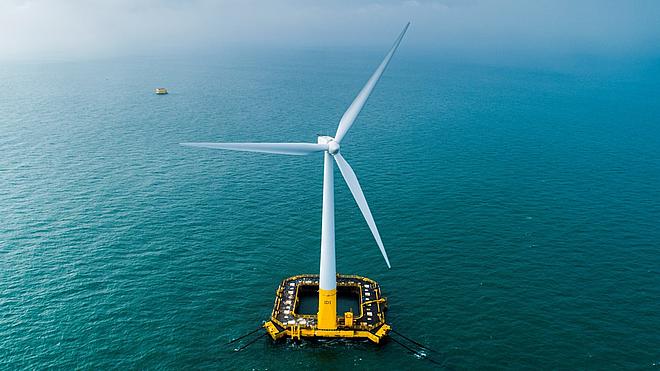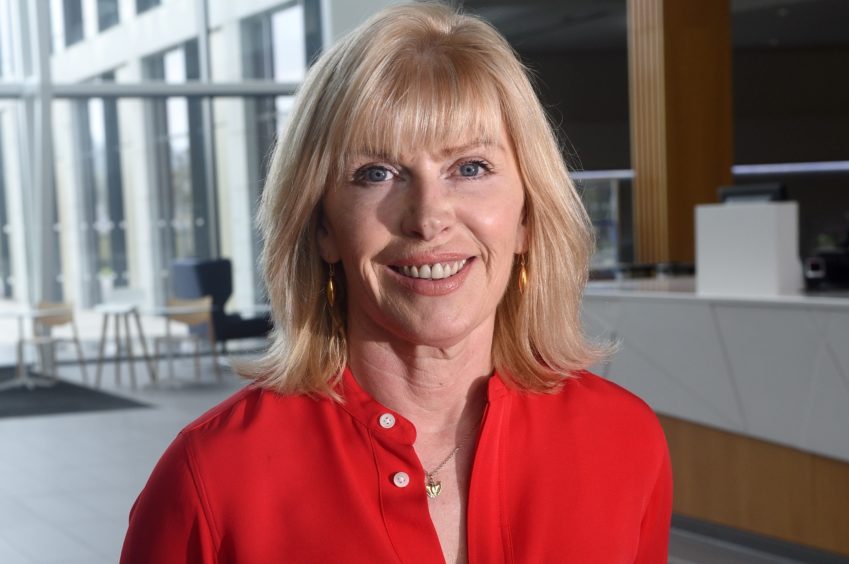
The offshore renewables industry needs to make a significant “step change” if floating wind deployment is going to be brought on par with fixed-bottom.
Adam Morrison, project director for Moray Offshore Windfarm (West), said the support is in place from government to ensure that the UK maximises its enormous floating wind potential.
But he warned that a “big challenge” remained in creating a supply chain that is developed enough to respond to the future needs of the industry.
As part of plans to “build back greener” from the Covid-19 pandemic, the UK Government recently set a target to deliver 1 gigawatt of floating offshore wind by 2030 – more than 15 times the current volumes worldwide.
In the last few years, floating has played second fiddle to fixed-bottom developments, but that is forecast to change as developers target deeper waters and higher winds.
There are a handful of North Sea floating projects already in operation or in the final stages of deployment, including Hywind Scotland and Kincardine, both of which are off the north-east coast.
Speaking at Energy Voice’s maiden Energy Transition Ideas Exchange (ETIDEX) webinar, Mr Morrison said: “The potential we have in the UK, and particularly in Scotland, for floating wind is very clear and I’m confident we have the political support to make that a reality.
“But we have an even bigger step change to make when it comes to deployment and hitting the sort of scales we’ve seen with fixed-bottom.
“That’s of particular importance when it comes to preparing our supply chain so it’s able to fabricate substructures, for example.
“That’s a very exciting challenge but it’s also a big one and something we’re going to need to make rapid progress on in the coming years.”
So far the development of floating offshore wind in Scotland has been hampered by a lack of infrastructure – there are currently no ports big enough to cater to the requirements.
Last month, Westminster announced £160 million to upgrade shipyards in order to support offshore wind goals.
The move was widely welcomed by the industry but some felt the fund fell short of the levels required to make a meaningful difference.
Asked about holes in the supply chain that needed to be plugged, Mr Morrison admitted that the fabrication of floating foundations will be an “enormous undertaking” at the scales needed and would require “strategic investment”.
Transmission Network
He also highlighted the need to “transform” the UK’s transmission network to accommodate the levels of power that are being transported from “progressively further afield places”.
Mr Morrison added: “There is clear political support to do something there and that’s very pleasing to see. From our point of view we have a good opportunity to be a part of that and to influence it.
“The thing I would highlight is the urgency. This issue needs to be addressed now if we’re going to be able to connect the scale of projects needed in the coming decades.
“There’s a real need for support from policy makers and regulators in terms of making change rapidly.”
Lessons from Overseas
A key focus of Thursday’s ETIDEX discussion was on the need for a steady stream of offshore renewables developments to stimulate future investment in the sector and to act as a catalyst for the creation of a domestic supply chain.
Sian Lloyd Rees, UK country manager for Aker Solutions, set out some of the ways in which the UK could learn from other countries when it comes to accelerating the uptake of renewable technology.
She said: “In terms of support from the government for innovation, there are many pots of money and they come from lots of different companies.
“The challenge is actually joining them all together so that it’s easier for the supply chain to understand where funding is coming from and how it can be accessed.
“Sometimes the application process is very complex, even for a tier one firm, so it needs to be simplified and it needs to be clear on what it’s trying to establish.
“Germany recently announced seven billion euros to develop technology specifically designed to make them a world leader in hydrogen. That’s a very clear, very focused ambition.
“I think we can learn a lot and I think there are measures we can take to make it simpler for supply chain firms to access the funding they need.”
Recommended for you


